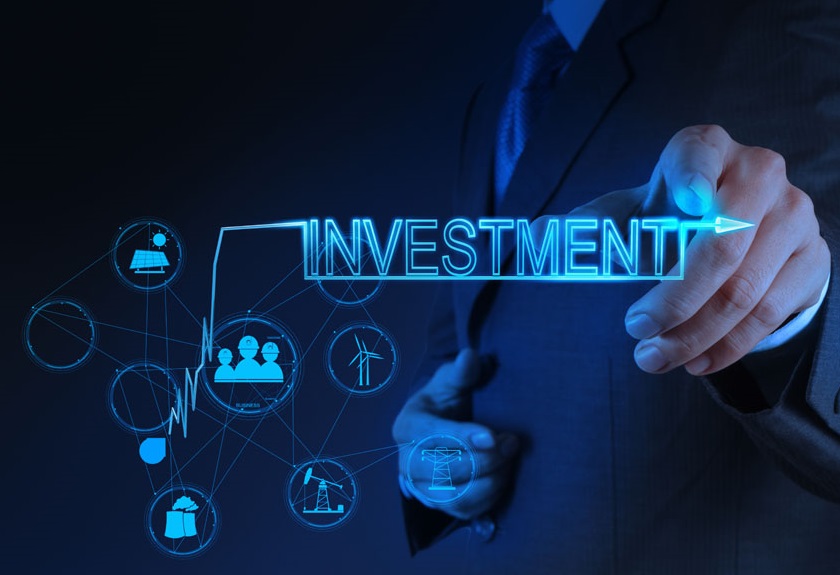Sustainable infrastructure investments are becoming increasingly critical as the world seeks to address climate change, promote environmental stewardship, and build resilient economies. These investments focus on projects that not only generate long-term financial returns but also contribute positively to the environment, society, and the economy. Here's an overview of sustainable infrastructure investments, the key sectors involved, and strategies for investors:
1. Green Energy Infrastructure

- Key Sectors: Solar power, wind energy, hydropower, and geothermal energy.
- Investment Focus: Renewable energy infrastructure is one of the most significant areas for sustainable infrastructure investments. Projects may involve developing new energy generation plants or upgrading existing ones to utilize cleaner sources of energy.
- Trends:
- Expansion of offshore wind farms and solar parks.
- Investment in energy storage solutions (e.g., battery storage) to manage intermittent renewable energy sources.
- Grid modernization to incorporate renewable energy efficiently.
- Why Invest?: Renewable energy is at the heart of decarbonizing global economies, making it an essential area for sustainable infrastructure. Governments worldwide are offering incentives and subsidies to support the transition to clean energy, which enhances the viability and profitability of investments.
2. Energy Efficiency and Smart Grids
- Key Sectors: Smart meters, energy-efficient buildings, and automation in energy management.
- Investment Focus: Smart grids, which integrate digital technology into electricity distribution, enable more efficient energy use and management. Additionally, energy-efficient technologies in buildings, manufacturing, and transportation reduce overall energy consumption.
- Trends:
- Increased demand for retrofitting buildings with energy-efficient technologies (e.g., insulation, efficient heating/cooling systems).
- Growing interest in Internet of Things (IoT) applications for smart cities, including lighting, waste management, and water distribution systems.
- Why Invest?: Energy efficiency is one of the most cost-effective ways to reduce carbon emissions. Smart grids can improve grid resilience, reduce energy waste, and integrate distributed energy sources. These projects often have long-term government support and offer stable returns.
3. Sustainable Water and Waste Management
- Key Sectors: Wastewater treatment, recycling infrastructure, water conservation systems, and waste-to-energy technologies.
- Investment Focus: Water infrastructure projects that ensure sustainable access to clean water, manage wastewater, and promote conservation are essential for addressing the increasing strain on water resources. Waste management investments aim to improve recycling rates, reduce landfill use, and harness waste as a resource.
- Trends:
- Water recycling and desalination technologies are gaining traction as freshwater sources become scarcer.
- Investment in waste-to-energy facilities that can convert organic waste into usable energy, such as biogas.
- The integration of circular economy principles, where waste materials are reused and recycled rather than disposed of.
- Why Invest?: Water scarcity and waste management are critical global challenges. As urbanization increases and populations grow, efficient water and waste management systems will be necessary. These sectors benefit from stable, long-term demand and government support, offering reliable returns.
4. Sustainable Transportation Infrastructure
- Key Sectors: Electric vehicles (EV) infrastructure, public transportation systems, and low-carbon logistics.
- Investment Focus: Developing electric vehicle charging networks, investing in public transportation (especially in urban areas), and modernizing freight and logistics systems to reduce carbon emissions from transport.
- Trends:
- Expansion of EV charging stations to support the transition to electric vehicles.
- Development of high-speed rail and efficient public transit networks to reduce reliance on private cars.
- Investment in green logistics infrastructure, including the use of electric trucks and sustainable supply chain management.
- Why Invest?: The transportation sector is a major emitter of greenhouse gases, and its transition to low-carbon alternatives presents a significant investment opportunity. Growing government commitments to decarbonize transportation and invest in green infrastructure provide a strong market for these projects.
5. Resilient Infrastructure
- Key Sectors: Flood protection, climate-resilient buildings, coastal defense systems, and disaster recovery infrastructure.
- Investment Focus: Resilient infrastructure projects aim to protect communities and assets from the impacts of climate change, including sea-level rise, extreme weather, and other environmental hazards.
- Trends:
- Development of flood defenses and infrastructure upgrades to withstand rising sea levels and extreme weather events.
- Investment in disaster-proof buildings and infrastructure, using climate-resilient materials and technologies.
- Why Invest?: Climate resilience is becoming a key area of focus for governments and cities. As climate change accelerates, the need for infrastructure that can withstand environmental challenges will grow, creating a sustained demand for these types of projects.
6. Sustainable Urban Development
- Key Sectors: Green buildings, sustainable city planning, and low-carbon urban environments.
- Investment Focus: Urban infrastructure that prioritizes sustainability and minimizes environmental impact is a key component of sustainable cities. This includes building energy-efficient buildings, implementing green spaces, and investing in low-carbon public transport systems.
- Trends:
- The rise of "smart cities" that integrate digital solutions to improve urban management (e.g., traffic, waste, and energy).
- Investment in eco-friendly building certifications (e.g., LEED, BREEAM) and green building technologies.
- Why Invest?: As urban populations continue to grow, cities will need to adapt by investing in sustainable infrastructure. The global shift toward sustainable urban development provides a long-term growth opportunity for investors.
7. Circular Economy and Infrastructure
- Key Sectors: Recycling, reusing, and remanufacturing waste materials into new products.
- Investment Focus: Infrastructure that supports the circular economy, such as recycling facilities, remanufacturing plants, and infrastructure to support product take-back schemes.
- Trends:
- Investment in technologies that enable waste to be recycled or repurposed for new uses.
- Creation of infrastructure to support the reuse of materials and reduce dependency on raw resources.
- Why Invest?: The circular economy reduces waste and promotes sustainability, which is increasingly important for governments and corporations. As regulations around waste management and recycling tighten, infrastructure to support these activities will see increased demand.
Conclusion
Sustainable infrastructure investments offer significant long-term growth potential and contribute to addressing some of the world’s most pressing environmental and social challenges. As governments and businesses continue to prioritize sustainability, the market for green infrastructure will expand, creating opportunities for investors to diversify their portfolios while supporting the transition to a more sustainable and resilient global economy.
Investors interested in these sectors should look for projects that align with their environmental, social, and governance (ESG) goals while providing attractive financial returns. Sustainable infrastructure investments not only benefit the planet but also offer significant potential for financial performance, especially as global efforts to combat climate change intensify.
